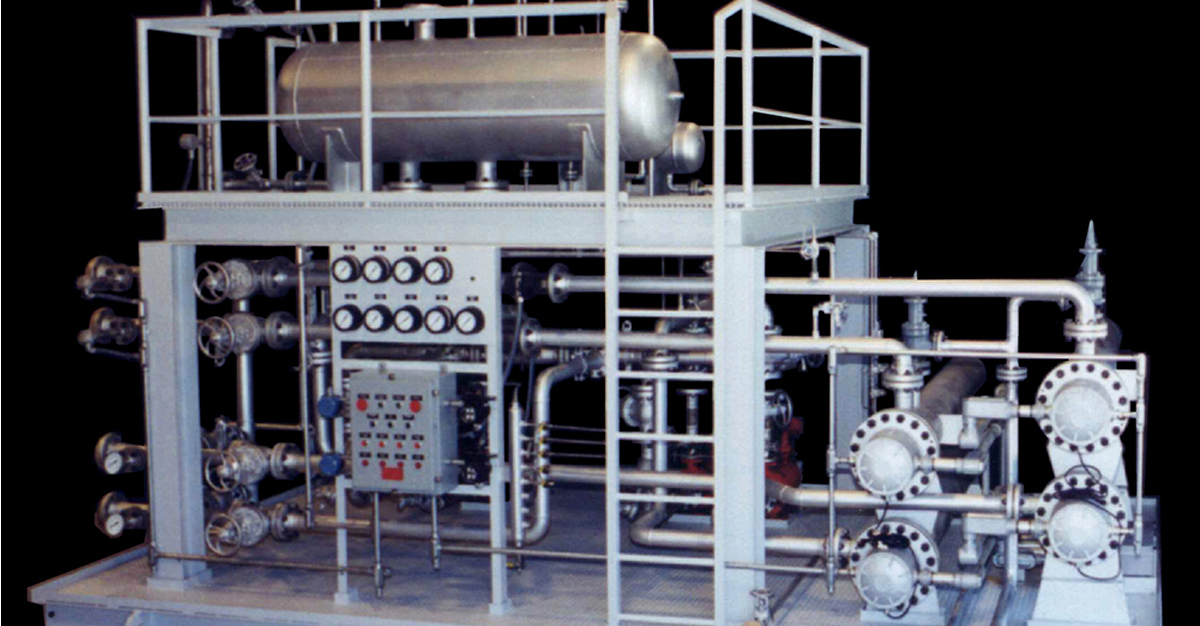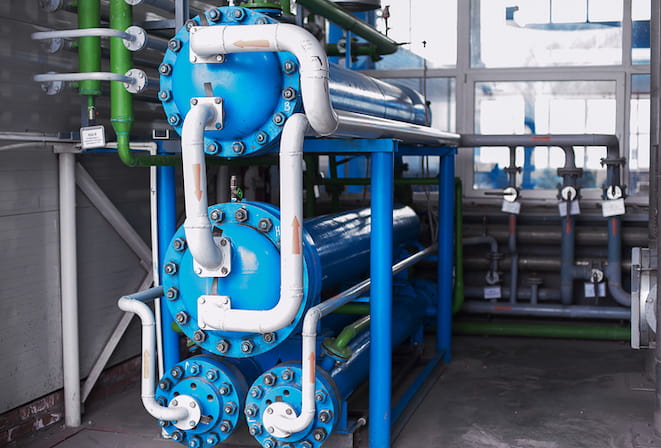The Function of Heat Transfer Solutions in Sustainable Energy Solutions for the Future
Heat transfer systems are necessary in the mission for sustainable energy services. They enhance thermal power monitoring, boosting the performance of eco-friendly technologies. By using devices like radiation, convection, and conduction, these systems minimize power losses. Their role in solar thermal and geothermal applications is specifically substantial. As advancements emerge, the possibility for further innovations elevates vital questions concerning future energy approaches. What advancements will shape the landscape of lasting energy?
Recognizing Heat Transfer Equipments

The Relevance of Thermal Power Monitoring
Efficient thermal power monitoring is necessary for making best use of energy efficiency and lessening waste in various systems. By managing temperature and enhancing Heat transfer processes, organizations can considerably lower energy usage and functional prices. Reliable administration entails the implementation of sophisticated modern technologies and techniques that keep an eye on and control thermal conditions within systems, making sure that power sources are used efficiently. In addition, proper thermal energy administration adds to lowering greenhouse gas emissions, lining up with worldwide sustainability goals. It also enhances system dependability and efficiency, causing boosted item quality and longer devices life-span. Ultimately, prioritizing thermal power administration is an important action in the direction of producing much more lasting power remedies and fostering an accountable method to energy consumption in commercial and property contexts.
Applications of Heat Transfer in Renewable Energy
While various renewable resource resources assure sustainability, the reliable application of Heat transfer plays a vital role in their effectiveness. In wind energy systems, Heat transfer is used for wind turbine part air conditioning, enhancing performance and long life. Geothermal energy depends on reliable Heat exchange between the planet's subsurface and the liquid distributing in the system, making best use of energy extraction. Biomass energy procedures likewise take advantage of Heat transfer, as it assists in transforming organic products into usable gas with pyrolysis and gasification. Additionally, in hydropower, keeping suitable temperatures in tanks can enhance energy result. Each of these applications demonstrates the critical relevance of Heat transfer systems in enhancing renewable resource innovations, eventually adding to a more sustainable energy future.
Enhancing Solar Thermal Power Efficiency
As solar thermal power systems remain to develop, enhancing their effectiveness has ended up being crucial for making best use of energy output. Advances in Heat transfer modern technologies, such as improved thermal storage materials and ingenious Heat exchangers, play a considerable duty in enhancing performance. By using innovative products that have superior thermal conductivity, systems can transfer and catch Heat better. Additionally, integrating radar that adhere to the sunlight's course warranties that enthusiasts obtain excellent solar exposure throughout the day. Utilizing nanotechnology in solar absorbers can even more boost power absorption rates. Additionally, integrating computerized control systems aids manage temperatures and take care of power distribution efficiently, causing lowered losses and enhanced overall system performance. These improvements lead the way for even more lasting solar thermal power options in the future.
Geothermal Home Heating: A Sustainable Solution
Geothermal heating presents a practical choice for lasting power, supplying considerable ecological benefits through decreased greenhouse gas discharges. Its efficiency and cost-effectiveness make it an attractive choice to traditional heater. Nonetheless, difficulties related to application should be addressed to optimize its prospective influence.
Environmental Benefits of Geothermal
Traditional heating approaches add substantially to greenhouse gas emissions, geothermal heating offers a compelling alternative that minimizes ecological influence. By harnessing the Planet's interior Heat, geothermal systems utilize a renewable resource source, significantly decreasing reliance on nonrenewable fuel sources. This method generates very little carbon exhausts, making it a cleaner option for domestic and commercial heating. Furthermore, geothermal systems promote power performance, as they need less power compared to conventional heater. DVS Heat Transfer Systems. The application of geothermal energy additionally assists in decreasing air pollution, improving local air high quality and public health and wellness. As a sustainable option, geothermal home heating supports environment modification mitigation initiatives, positioning itself as a necessary component in the change in the direction of a greener future
Performance and Cost-Effectiveness
Just how does geothermal home heating determine up in terms of effectiveness and cost-effectiveness contrasted to standard furnace? Geothermal home heating demonstrates exceptional performance, usually attaining a coefficient of efficiency (COP) of 3 to 5, indicating it creates 3 to 5 systems of Heat for every device of electrical power consumed. This performance equates into reduced operating expense, specifically in regions with secure geothermal sources. Initial setup prices can be higher than traditional systems; however, lasting financial savings on energy expenses and minimized maintenance expenses can counter these in advance investments. In addition, lots of governments incentivize geothermal systems via refunds and tax obligation credit scores, improving their cost-effectiveness. On the whole, geothermal heating emerges as a sustainable and financially viable alternative to more standard heating remedies.
Execution Obstacles and Solutions
Countless obstacles can restrain the widespread execution of geothermal heating systems, regardless of their clear benefits as a sustainable energy service. High initial installation expenses usually prevent investors and house owners, making financing a considerable barrier. Additionally, the geographical limitations of suitable geothermal websites limit availability in specific areas. Local regulations and permitting processes can also make complex project advancement, leading to delays. Public understanding and understanding of geothermal systems remain reduced, hindering acceptance. To resolve these obstacles, targeted education campaigns can improve public expertise, while government incentives can reduce monetary problems. Teaming up with regional authorities to enhance guidelines might assist in smoother project approvals, ultimately promoting the adoption of geothermal home heating as a viable, sustainable energy alternative.
Technologies in Heat Transfer Technologies
Innovations in Heat transfer modern technologies play an essential function in boosting energy effectiveness and sustainability. Advanced Heat exchangers and stage modification products go to the leading edge of these advancements, using significant renovations in thermal administration. These innovations not only optimize power use however likewise add to minimizing environmental influence in numerous applications.
Advanced Heat Exchangers
Advanced Heat exchangers play a vital duty in improving power performance across different applications in sustainable energy options. These gadgets facilitate the transfer of Heat in between 2 or more fluids, noticeably lowering energy consumption in procedures such as commercial heating, air conditioning, and power generation. Advancements in products and design, such as making use of nanofluids and small read here configurations, have led to boosted thermal efficiency and lowered size requirements. In addition, advancements in electronic tracking and control systems allow for maximized procedure, more increasing efficiency. By reducing waste Heat and taking full advantage of energy recovery, progressed Heat exchangers add to reduce carbon footprints and support the change towards environmentally friendly innovations. Their weblink continued growth is important for achieving worldwide energy sustainability objectives.
Phase Change Products
The integration of stage adjustment products (PCMs) into Heat transfer technologies represents a considerable development in energy administration and efficiency. PCMs take in and launch thermal energy throughout their stage changes, making it possible for efficient temperature level regulation in building products and power systems. By keeping excess Heat during top durations and launching it when demand rises, PCMs contribute to pack changing and energy conservation - DVS Heat Transfer Systems. This capability improves the performance of renewable resource systems, specifically in solar thermal applications. Furthermore, PCMs can enhance the thermal convenience of interior settings, decreasing reliance on standard heating and cooling techniques. As technologies in PCM solutions remain to emerge, their function in lasting power options is poised to expand, offering encouraging methods for future research and application

Future Prospects for Heat Transfer in Sustainable Power
As the demand for sustainable energy solutions remains to climb, the function of Heat transfer systems is becoming progressively vital in shaping future modern technologies. Advancements in materials and designs are anticipated to improve performance in Heat transfer, minimizing energy losses in numerous applications. The integration of advanced thermal storage space systems, such as phase modification materials and thermochemical storage, will certainly allow better monitoring of power sources. Study into nanofluids and biomimetic Heat exchangers might additionally optimize thermal efficiency. Moreover, the adoption of clever technologies will permit real-time monitoring and flexible control of Heat transfer procedures. These innovations are poised to significantly add to the general efficiency and sustainability of energy systems, leading the method for an extra energy-efficient future.
Often Asked Inquiries
How Can Individuals Execute Heat Transfer Equipment in your home?

People can apply Heat transfer systems in the house by mounting energy-efficient home appliances, making use of radiant heat, and maximizing insulation. These measures boost power performance, lower costs, and promote lasting techniques in residential settings.

What Are the Expenses Linked With Setting Up Heat Transfer Equipments?
The costs related to installing Heat transfer systems differ widely, generally encompassing equipment, setup labor, and upkeep. Aspects such as system type, home dimension, and neighborhood laws significantly influence the overall expenditure involved.
Are There Federal Government Motivations for Heat Transfer System Installations?
Federal government motivations for Heat transfer system installments vary by area and can include tax gives, discounts, and credit ratings. These financial advantages aim to urge adoption, inevitably advertising power effectiveness and decreasing environmental influence within areas.
Exactly How Do Heat Transfer Solutions Influence Power Costs?
Heat transfer systems notably affect energy bills by maximizing energy effectiveness. By boosting the transfer of Heat, these systems decrease power usage, causing reduced utility expenses and more tips here developing a much more lasting strategy to energy administration.
What Maintenance Is Required for Heat Transfer Systems?
Maintenance for Heat transfer systems consists of routine inspections, cleansing of elements, checking liquid degrees, making sure correct insulation, and replacing used parts. These jobs assist keep efficiency, avoid breakdowns, and extend the system's operational life expectancy.
These systems facilitate the movement of thermal energy from one medium to one more, enabling the transfer of Heat for air conditioning, heating, or power generation objectives. Geothermal power depends on effective Heat exchange between the earth's subsurface and the fluid circulating in the system, optimizing power extraction. Furthermore, geothermal systems promote power effectiveness, as they need much less power compared to standard home heating systems. Advanced Heat exchangers play an essential function in improving energy effectiveness across numerous applications in lasting energy remedies. Heat transfer systems significantly affect energy costs by optimizing energy efficiency.